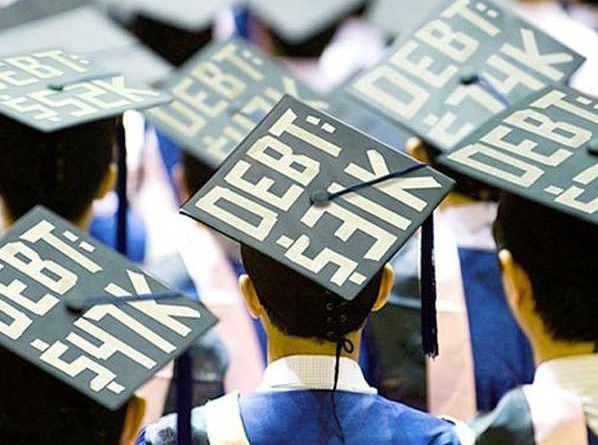The Student Loan Crisis and the 2016 Election
There is little question of the magnitude the Millennial vote will play in the 2016 presidential election, but what drives Millennials to the voting booth on election day is another question. Millennials are tech savvy, well educated, team oriented, and civic minded, they have easily outpaced Baby Boomers as the largest generation, and are determined to make the world conform to their way of thinking. When it comes to being politically engaged, student loan debt ranks high on the list of issues Millennials care most about.
The rising cost of student loan debt is strangling an entire generation and has become a growing national crisis. Currently, “student debt “now comprises 69 percent of the debt side of their balance sheets” for an average 25- to 30-year-old American.” As the generation mired in education debt, it is little wonder why Bernie Sanders message of free tuition spread like wild fire. The numbers are staggering and Millennials are looking for presidential candidates to provide solutions to their student loan crisis.
Democratic nominee, Hillary Clinton, has proposed a “$350-billion plan which would provide grants to states to make tuition debt-free for four-year, public colleges and limit the cost of non-tuition costs, like room, board, and books. The plan would also provide tuition-free community college.” It is apparent Clinton’s plan is an attempt to woo former Bernie young supporters and relies “on states to kick in matching funds for their students to participate. This would force cooperating states to reverse some of their recent budget cuts, but it wouldn’t force states to play along.“
On the Republican side of the presidential race, nominee Donald Trump has yet to lay out a solid plan on how he’ll tackle the student loan crisis. In a #AskTrump video on Twitter, Trump addressed the question by saying,
“Student debt is a tremendous problem in the United States. We’re gonna restructure it, we’re gonna make it possible for people borrow money, go through college, get through it. We’re gonna make it so it’s very affordable. Right now, it’s not fair, it’s one of the only places, frankly, where our country actually makes money and they make a lot of money. And that should not take place. We’re gonna make it really good for the student.“
While Trump does not exactly offer a meticulously laid out plan the way Clinton does when it comes to making education more affordable and quelling the student loan debt crisis, he has said he would “do something with low interest rates and extensions.” According to Sam Clovis, a national co-chair and policy director of Trump’s campaign, that something big would mean removing “the government from the student loan system and have private banks lend money to college students instead.” For some, this seems like a viable solution, less government, and better access to money for college, however, it’s the opposite. By removing the government from the equation and forcing students to borrow from private lenders low income students will be at a disadvantage because they may have to “forgo pursuing a liberal arts degree unless they are able to access scholarship money.“
It is apparent both candidates’ approach to reforming education is drastically different. Clinton relies on federal and state cooperation while Trump wants to privatize lending and force students to fend for themselves in paying for education. Ironically, neither Clinton nor Trump’s plan directly addresses the 8 million student loan borrowers in default owing approximately $115 billion, but focuses on the future generation of borrowers. It is hard to speculate how Millennials will be affected by either candidate’s plan in the long run. However, one thing is for certain, the student loan debt crisis is something plaguing the Millennial generation in a way unlike generations before them and cannot be fixed overnight. Currently, student loan debt is poised to be the next bubble that bursts, and both Clinton and Trump should study up on how they’re going to solve this crisis because come January 20th one of them will find student loan debt at the top of their list of national crises that needs solving in order to save an entire generation from the second coming of the depression.

